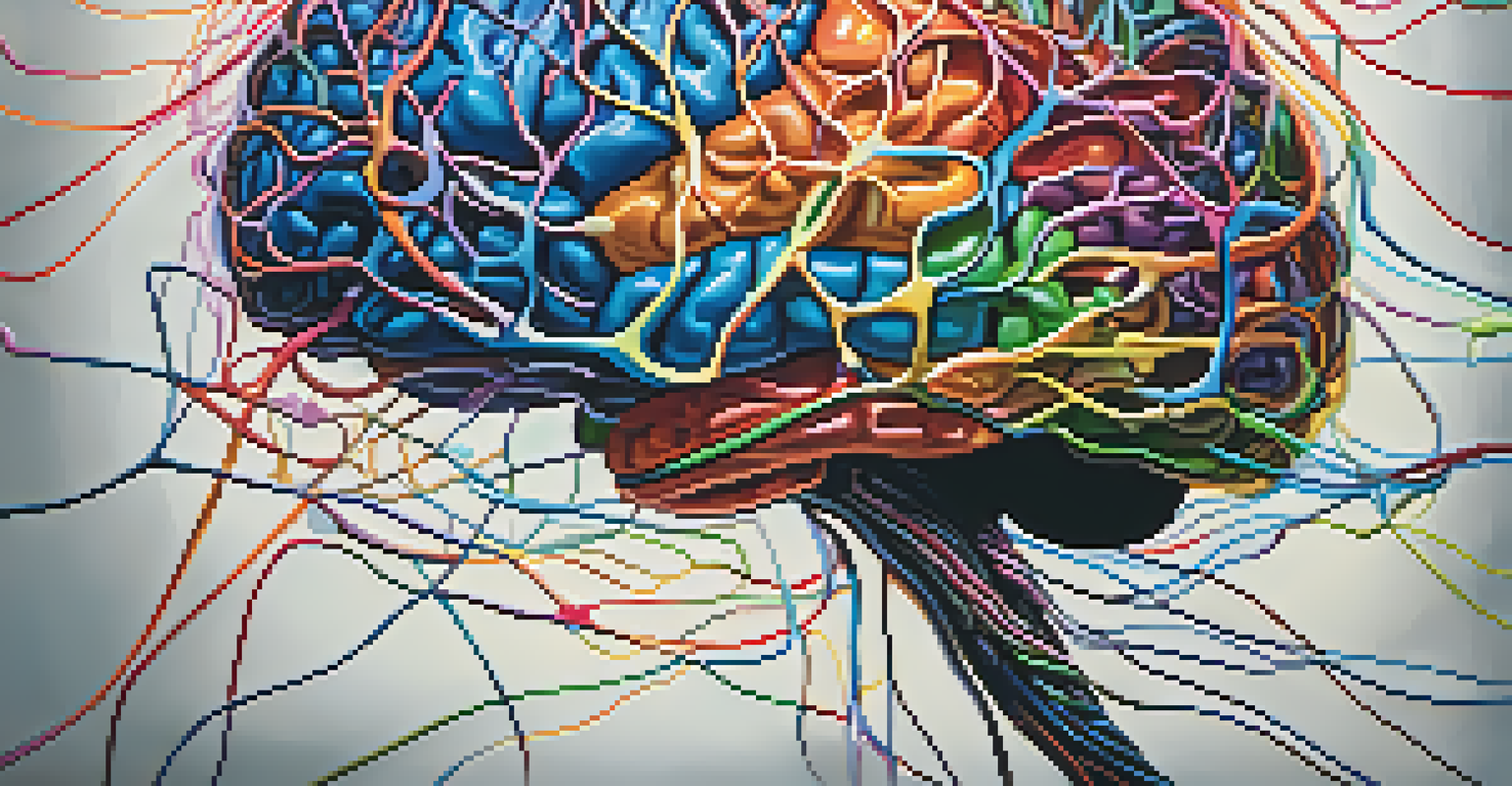How Entheogens Influence Human Consciousness and Perception

What Are Entheogens and Their Historical Context?
Entheogens are substances that can alter perception and consciousness, often used in spiritual or religious contexts. They have a rich history, with cultures around the world utilizing these compounds in rituals for centuries. From the ancient Aztecs using peyote to modern-day practices involving ayahuasca, these substances have played significant roles in human connection to the divine.
Psychedelics can help us remember who we are, to reconnect with the sacred, and to heal our traumas.
These natural substances often come from plants or fungi and can induce profound experiences, commonly referred to as 'mystical experiences.' Such experiences are thought to provide insights into one's self and the universe, which can lead to lasting changes in perspectives and behaviors. Understanding the historical context helps us appreciate the deep-rooted connections humans have with these substances.
As we explore their impact on consciousness, it’s essential to recognize that the cultural significance of entheogens varies widely. While some see them as sacred tools for enlightenment, others may view their use through the lens of recreational drug use. This dichotomy sets the stage for a deeper exploration of how they influence our minds.
The Science Behind Entheogens and Brain Chemistry
The effects of entheogens on human consciousness can be traced back to their interaction with our brain chemistry. Many of these substances act on serotonin receptors, particularly the 5-HT2A receptor, which plays a crucial role in mood, cognition, and perception. This interaction can lead to changes in thought patterns and emotional responses, enhancing creativity and introspection.

Research shows that entheogens can promote neuroplasticity, the brain's ability to reorganize itself by forming new neural connections. This ability can help individuals break free from harmful thought patterns or emotional blockages. For instance, studies have indicated that psychedelics like psilocybin can alleviate symptoms of depression and anxiety, providing a fresh perspective on mental health.
Entheogens: Historical and Cultural Roots
Entheogens have been used for centuries in various cultures for spiritual and healing purposes, highlighting their deep-seated significance.
While the science is still evolving, the implications of these findings are profound. Understanding how entheogens influence our brain chemistry opens up new avenues for therapy and healing, highlighting their potential to reshape our perceptions of self and reality.
Altered States of Consciousness: A New Perspective
One of the most fascinating aspects of entheogens is their ability to induce altered states of consciousness. These experiences can range from feeling a deep connection to nature to experiencing profound insights about one's life. This shift in awareness can often lead to a greater sense of empathy and understanding towards others, fostering a more compassionate worldview.
The mind is like water. When it's turbulent, it's difficult to see. When it's calm, everything becomes clear.
Users frequently report experiencing a sense of unity with their surroundings, as if the boundaries between self and the universe dissolve. This feeling of oneness can be transformative, encouraging individuals to reevaluate their priorities and values. It's not uncommon for people to emerge from these experiences with a renewed sense of purpose and a commitment to positive change.
However, it's important to approach these altered states with intention and respect. While they can be enlightening, the journey can also be challenging, often forcing individuals to confront deep-seated fears or unresolved trauma. Understanding this duality is key to navigating the complexities of entheogenic experiences.
Cultural Perspectives on Entheogen Use
Different cultures have distinct perspectives on the use of entheogens, often shaped by historical, spiritual, and social factors. In some Indigenous cultures, these substances are seen as sacred gifts from nature, used to connect with ancestors and the spirit world. This reverence contrasts sharply with the stigmatization often found in Western societies, where such substances are frequently labeled as illegal or dangerous.
In recent years, there has been a resurgence of interest in the therapeutic potential of entheogens, prompting a reevaluation of their role in modern society. Movements advocating for the decriminalization and responsible use of these substances are gaining momentum, highlighting the need for a more nuanced understanding of their benefits and risks.
Therapeutic Potential of Entheogens
Recent studies suggest that entheogens like psilocybin and MDMA can effectively treat mental health conditions such as PTSD and depression.
This cultural shift also emphasizes the importance of education and harm reduction strategies. By fostering an open dialogue about entheogens, we can create a more informed society that respects both the traditional uses and the potential modern applications of these powerful substances.
The Therapeutic Potential of Entheogens
Recent scientific studies have begun to unveil the therapeutic potential of entheogens for treating various mental health conditions. Substances like MDMA and psilocybin have shown promise in clinical trials for conditions such as PTSD, depression, and anxiety. These findings suggest that entheogens may offer alternative treatment options for individuals who have not found relief through traditional therapies.
The therapeutic process often involves guided sessions where patients can confront difficult emotions in a safe environment. The profound insights gained during these sessions can lead to breakthroughs in understanding and processing trauma. Moreover, the experience can foster a sense of connection and support, reducing feelings of isolation that often accompany mental health struggles.
As the stigma around these substances continues to diminish, the mental health community is increasingly recognizing their potential. This shift not only opens doors for innovative treatment options but also encourages ongoing research into their long-term effects and benefits.
Challenges and Risks Associated with Entheogens
While entheogens offer intriguing benefits, it's crucial to acknowledge the potential challenges and risks they pose. Not everyone responds positively to these substances, and some individuals may experience adverse effects, such as anxiety or paranoia. It’s essential for users to approach entheogens with caution and ideally under the guidance of experienced practitioners.
Additionally, the context in which entheogens are used greatly influences the experience. A supportive environment can facilitate positive outcomes, while a chaotic or unsafe setting can lead to distressing experiences. This underscores the importance of preparation and setting, as they play significant roles in shaping one’s journey with these substances.
Navigating Risks with Caution
While entheogens offer potential benefits, it's essential to approach their use carefully and in supportive environments to minimize risks.
Despite these challenges, many advocates argue that the potential benefits outweigh the risks when approached responsibly. Education, harm reduction, and community support are vital components in ensuring safe and meaningful experiences with entheogens.
The Future of Entheogens in Society and Science
As we look to the future, the role of entheogens in society and science appears to be evolving. With ongoing research and increasing public interest, there is potential for a paradigm shift in how we view these substances. The integration of entheogens into therapeutic practices could change the landscape of mental health treatment as we know it.
Moreover, as the conversation around entheogens expands, it opens up opportunities for greater understanding and acceptance within different cultural contexts. This shift could lead to more inclusive dialogues about spirituality, consciousness, and personal growth that transcend traditional boundaries.

Ultimately, the future of entheogens will likely depend on a balance between scientific inquiry, cultural respect, and personal responsibility. By fostering informed discussions and research, we can harness the transformative potential of entheogens while ensuring their safe and respectful use in society.